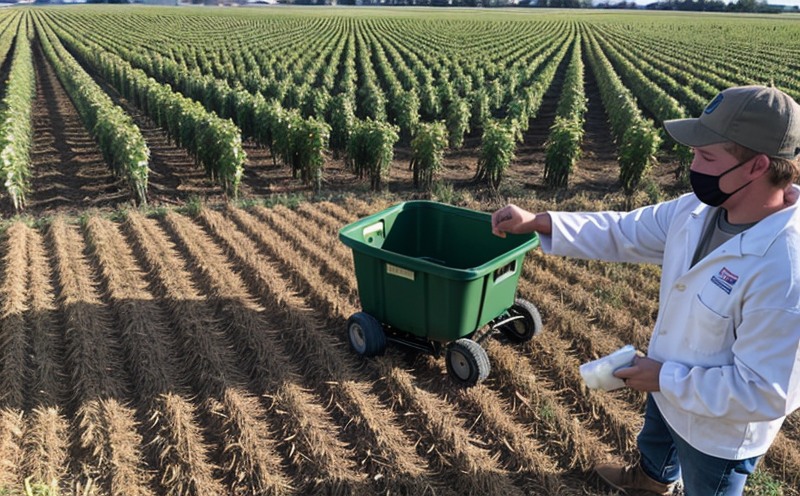Aroma and Flavor Compound Testing
Testing aroma and flavor compounds is a critical component in ensuring high-quality agricultural products meet consumer expectations. This service involves analyzing volatile organic compounds (VOCs) responsible for the sensory attributes of foodstuffs, beverages, and other agricultural products post-harvest.
The process begins with selecting appropriate samples that represent the product’s expected aroma and flavor profile. Samples can be extracted using various techniques such as headspace solid-phase microextraction (HS-SPME) or direct injection into a gas chromatograph (GC). The GC is coupled with either mass spectrometry (GC-MS) for precise identification of individual compounds or olfactometry to evaluate the overall sensory experience.
Once extracted, these VOCs undergo separation and quantification. Modern analytical methods like capillary GC allow for high-resolution separations, while accurate calibration ensures reliable quantitative results. This is essential for compliance with international standards such as ISO 13725 (Method of analysis for volatile compounds in foodstuffs).
The identification phase involves comparing retention times and mass spectra against reference databases. Advanced techniques like comprehensive two-dimensional gas chromatography (GC×GC) offer enhanced resolution, allowing even minor components to be detected. This precision is vital given the subtle differences that can significantly impact consumer perception.
Post-harvest quality testing ensures that agricultural products maintain their sensory integrity throughout storage and distribution. It helps in identifying potential issues early on, such as off-flavors or aromas caused by microbial spoilage or enzymatic activity. By understanding these compounds, producers can implement targeted interventions to enhance product shelf-life.
Compliance with global standards ensures market access and consumer trust. For instance, EU regulations mandate certain levels of specific flavor compounds in processed foods. Aroma and flavor compound testing supports adherence to these requirements by providing quantifiable data on compliance.
International Acceptance and Recognition
- Aroma and flavor compound tests are recognized internationally under various standards including ISO 13725, ASTM E980, and EN 24645. These standards provide a framework for consistent testing practices across different regions.
- Compliance with these standards ensures that results are accepted by regulatory bodies in countries like the United States (FDA), Europe (EU), Canada, China, and others.
- Global acceptance of test results enhances marketability, allowing agricultural products to be sold internationally without additional testing.
Competitive Advantage and Market Impact
Testing aroma and flavor compounds provides a competitive edge by enabling producers to optimize their products. By understanding the exact composition of volatile compounds, companies can refine formulas to meet consumer preferences more effectively.
This service also aids in maintaining product consistency across different production batches, which is crucial for brand reputation. Consistent quality is key to building trust with consumers and retailers alike.
In the context of agriculture, this testing ensures that products remain viable throughout their shelf-life, reducing waste and increasing profitability. It supports sustainable practices by minimizing resource use inefficiencies associated with poor product quality.
Use Cases and Application Examples
Aroma and flavor compound testing is applicable in various scenarios within the agricultural sector:
- Fruit Juices: Ensuring a consistent taste profile across different batches helps maintain customer satisfaction.
- Canned Vegetables: Detecting off-flavors early can prevent spoilage, thereby reducing waste and maintaining shelf-life.
- Dairy Products: Identifying specific flavor compounds aids in quality control and product differentiation.
In research and development (R&D), this service supports innovation by providing detailed insights into sensory attributes. This information can be used to develop new products or improve existing ones, enhancing market competitiveness.
For procurement departments, understanding the aroma and flavor profiles of raw materials helps ensure quality before they reach production stages. This reduces risks associated with substandard inputs.





